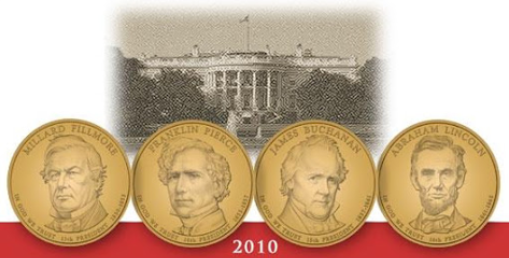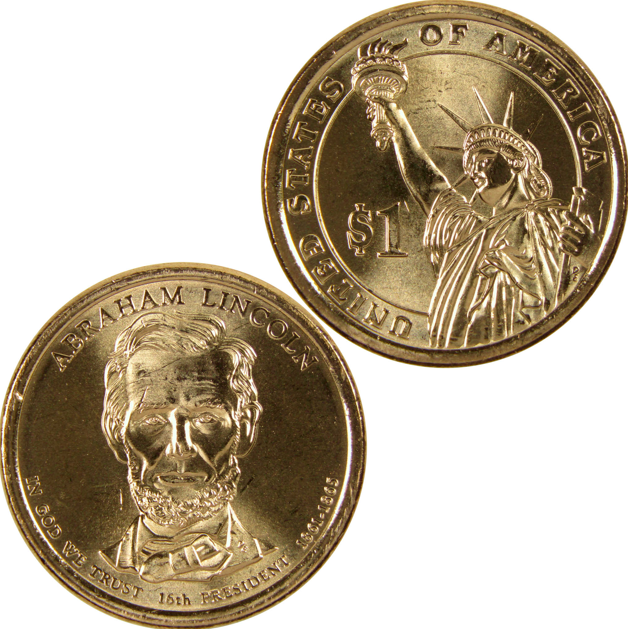The Abraham Lincoln One Dollar Coin: A Legacy Cast in Metal
Abraham Lincoln One Dollar Coin: On a brisk autumn afternoon in 2009, a crowd gathered in Springfield, Illinois, for a ceremony marking a unique moment in American currency history. Amid the flurry of colorful fall leaves and the timeless backdrop of Lincoln’s hometown, a new coin was introduced—the Abraham Lincoln One Dollar Coin. This wasn’t just any coin; it was a tribute to a man whose legacy had shaped the nation. As the coin was unveiled, it held the promise of honoring Lincoln’s contributions in a way that was both contemporary and historic. Yet, as we look back, the story of this coin reflects a broader tale of American numismatic ambitions, public sentiment, and the balance between tradition and innovation.
The Journey of Abraham Lincoln One Dollar Coin:
The Abraham Lincoln One Dollar Coin is a notable part of the U.S. Mint’s Presidential $1 Coin Program, which began in 2007. This initiative aimed to honor all U.S. Presidents by issuing a series of dollar coins, each featuring the likeness of a different president. Lincoln’s coin, released in 2010, was the fourth in the series.
The program sought to reinvigorate interest in dollar coins, which had struggled to gain traction since the introduction of the Sacagawea dollar in 2000. Despite the program’s high production volumes, dollar coins, including Lincoln’s, did not achieve widespread use, largely due to the continued preference for paper currency.
The Abraham Lincoln coin stands out for its design, featuring Lincoln’s profile based on a photograph by Mathew Brady and the Lincoln Memorial on the reverse side. Its edge inscriptions marked a technological innovation, introducing text on the edge of the coin for the first time in U.S. minting history.

The Statistics of Abraham Lincoln One Dollar Coin
The production and release of the Abraham Lincoln One Dollar Coin were marked by significant statistical milestones. According to the U.S. Mint, approximately 316 million Lincoln coins were produced in 2009 alone. This figure reflects the high expectations and the enthusiasm with which the coin was initially received.
Despite the robust production numbers, the coin’s reception was a mixed bag. A 2010 report by the Government Accountability Office (GAO) revealed that the Presidential $1 Coin Program faced challenges, including lower-than-expected public demand and high storage costs. By 2011, the U.S. Mint began to halt the production of new Presidential $1 Coins for circulation due to accumulating inventory and dwindling public interest.
Design and Unique Features of the Abraham Lincoln One Dollar Coin:
The Abraham Lincoln One Dollar Coin, part of the Presidential $1 Coin Program, is not just a piece of currency; it’s a reflection of a storied past and a showcase of numismatic innovation. Released in 2010, this coin honors the 16th President of the United States with a design and set of features that make it stand out in the realm of modern coinage. Let’s delve into the design elements and distinctive features of this coin.
Obverse Design: The Lincoln Portrait
On the obverse side of the coin, you’ll find a striking portrait of Abraham Lincoln. This design is based on a photograph taken by Mathew Brady, a famed Civil War photographer. The image captures Lincoln in profile, with his signature beard and deep-set eyes, reflecting the strength and resolve he is renowned for. The design was created by artist Louis R. (Lou) W. S. H. A. S. (Lou) and engraver Don Everhart, aiming to evoke the spirit of Lincoln’s era.
Reverse Design: The Lincoln Memorial
The reverse side of the coin features the Lincoln Memorial, an iconic structure in Washington, D.C., dedicated to Lincoln’s memory. The depiction of the Memorial is an intricate design, showcasing the building’s columns and steps. Don Everhart also created this design, the same engraver who designed the obverse. He rendered the Memorial to capture its grandeur and significance, serving as a lasting tribute to Lincoln’s legacy.
Edge Inscriptions: A First for U.S. Coinage
One of the most notable features of the Abraham Lincoln One Dollar Coin is its edge inscriptions. For the first time in U.S. coinage history, the U.S. Mint inscribed dollar coins on the edge with key information. This coin includes the minting year and the motto “E Pluribus Unum” (Out of Many, One). The U.S. Mint introduced the edge inscriptions to prevent counterfeiting and provide additional information, enhancing the coin’s security and authenticity.
Mint Marks and Varieties
The Abraham Lincoln One Dollar Coin was minted at three different facilities: Philadelphia, Denver, and San Francisco. Each mint mark is represented by a small letter on the edge of the coin, providing an additional layer of identification for collectors. The mint marks are as follows:
- P for Philadelphia
- D for Denver
- S for San Francisco
Specifications of Abraham Lincoln One Dollar Coin
- Diameter: 26.5 mm (1.043 inches)
- Thickness: 2.0 mm (0.079 inches)
- Weight: 8.1 grams (0.286 ounces)
- Composition: The U.S. Mint made the coin from a copper-manganese-brass alloy, giving it a distinctive golden color.

Production and Circulation
The U.S. Mint produced approximately 160 million Abraham Lincoln One Dollar Coins. Despite this high production number, the coin saw limited circulation, partly due to the public’s preference for paper dollar bills and a general disinterest in dollar coins.
Public Sentiment and the Abraham Lincoln One Dollar Coin’s Fate:
Public interest in the coin, while initially high, waned over time. The GAO reported that the program’s marketing strategy was insufficient, contributing to a lack of widespread appeal. Additionally, the rise of electronic transactions and the decline in cash usage played a significant role in diminishing the demand for physical currency, including commemorative coins.
By 2012, the U.S. Mint had discontinued the release of the coins for general circulation. However, the coins remained available for collectors through various special sets and packaging options. The Lincoln dollar, therefore, transitioned from a mainstream piece of currency to a niche collectible.
Conclusion:
The Abraham Lincoln One Dollar Coin, with its compelling design and historical significance, stands as a reminder of both the successes and challenges faced by modern numismatic endeavors. It encapsulates the ambition to honor an iconic president through contemporary means, even as it reflects broader shifts in public engagement with currency. While the coin may not have achieved the widespread circulation initially envisioned, it remains a cherished piece for collectors and history enthusiasts alike. Through its creation and eventual decline, the Lincoln dollar coin underscores the enduring impact of Lincoln’s legacy and the evolving nature of American numismatics.
FAQs
When did the U.S. Mint release the Abraham Lincoln One Dollar Coin?
- The U.S. Mint released the Abraham Lincoln One Dollar Coin in 2010.
How many Abraham Lincoln One Dollar Coins did the U.S. Mint mint?
- The U.S. Mint produced approximately 160 million Abraham Lincoln One Dollar Coins.
What is the current value of the Abraham Lincoln One Dollar Coin?
- Collectors typically value the Abraham Lincoln One Dollar Coin at $1 to $3 in circulated condition and $10 to $20 in mint state.
Why did the U.S. Mint not widely circulate the Abraham Lincoln One Dollar Coin?
- Public preference for paper dollars and general disinterest in dollar coins limited the Abraham Lincoln One Dollar Coin’s circulation.
Are there any special versions of the Abraham Lincoln One Dollar Coin?
- The U.S. Mint did not produce special versions, but coins from different mints may show slight variations.
Have you ever stumbled upon a coin with a story as rich as its history?
